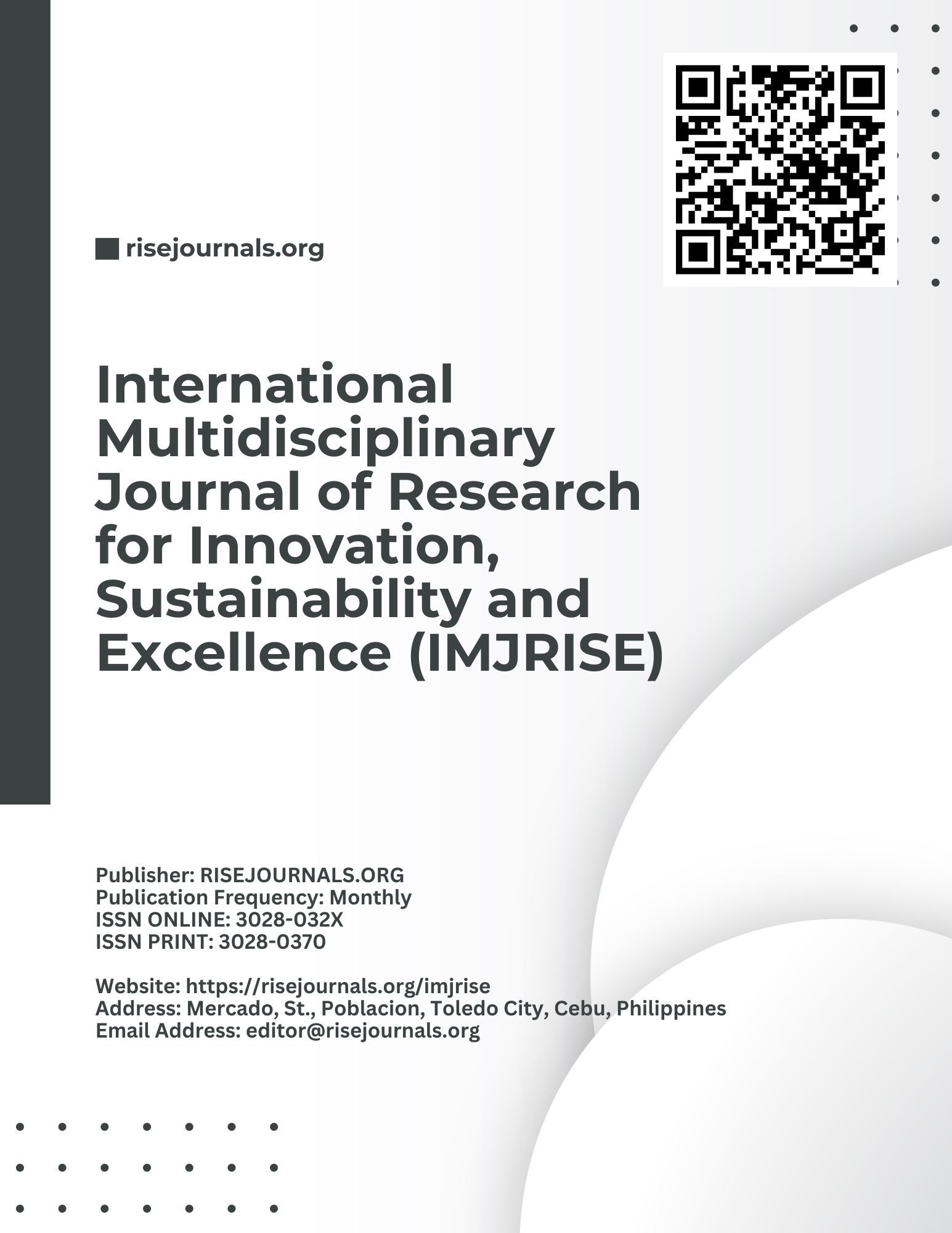Worksheet Design and Learning Effectiveness: A Comprehensive Analysis in Electrical Installation and Maintenance Training
Keywords:
Technical drafting skills, Electrical Installation and Maintenance, Instructional materials, Active learning, Self-directed learning, Multimedia integrationAbstract
This study examines the effectiveness of worksheets in enhancing technical drafting skills within the realm of Electrical Installation and Maintenance (EIM) education. Through a systematic review of existing literature, key findings regarding the impact, variability, and areas for improvement in worksheet design and implementation are synthesized. The review highlights the importance of worksheets as valuable instructional materials for promoting active engagement, practical application, and skill development among students in EIM education. Clear instructions, structured activities, opportunities for self-directed learning, and integration of multimedia elements emerge as key features associated with enhanced learning outcomes. However, variability in worksheet design and implementation underscores the need for further research and standardization efforts to optimize their educational utility. Future research endeavors should explore optimal formats, content, and delivery methods of worksheets, while establishing standardized guidelines for development and evaluation. By addressing these gaps, educators can enhance the effectiveness and relevance of worksheets as instructional tools in EIM education, ultimately empowering students to succeed in mastering technical drafting skills and preparing for future careers in the field.
References
Alenezi, A. (2020). The role of e-learning materials in enhancing teaching and learning behaviors. International Journal of Information and Education Technology, 10(1), 48-56.
Bulosan, R. L. (2023). Assessment on Electrical Installation and Maintenance (EIM) Delivery among Technical Vocational Livelihood Students.
Bruner, J. S. (2009). The process of education. Harvard university press.
Carroll, T. N. (1989). Inservice workshop for high school physics teachers: an evaluation. The University of North Carolina at Greensboro.
Clark, R. W., Threeton, M. D., & Ewing, J. C. (2010). The Potential of Experiential Learning Models and Practices in Career and Technical Education and Career and Technical Teacher Education. Journal of career and technical education, 25(2), 46-62.
Cordova Jr, N., Kilag, O. K., Andrin, G., Groenewald, E., & Abella, J. (2024). Promoting Literacy in Early Childhood: Leadership Practices and Long-Term Educational Impact. Excellencia: International Multi-disciplinary Journal of Education (2994-9521), 2(1), 79-89.
DeWitt, J., & Storksdieck, M. (2008). A short review of school field trips: Key findings from the past and implications for the future. Visitor studies, 11(2), 181-197.
DuBois, D. L., Holloway, B. E., Valentine, J. C., & Cooper, H. (2002). Effectiveness of mentoring programs for youth: A meta‐analytic review. American journal of community psychology, 30(2), 157-197.
Eison, J. (2010). Using active learning instructional strategies to create excitement and enhance learning. Jurnal Pendidikantentang Strategi Pembelajaran Aktif (Active Learning) Books, 2(1), 1-10.
Fisher, D., & Frey, N. (2021). Better learning through structured teaching: A framework for the gradual release of responsibility. ASCD.
Fortus, D., Krajcik, J., Dershimer, R. C., Marx, R. W., & Mamlok‐Naaman, R. (2005). Design‐based science and real‐world problem‐solving. International Journal of Science Education, 27(7), 855-879.
Gagné, R. M., & Gagne, R. M. (1985). Conditions of learning and theory of instruction.
Gresham, J. D. (2019). Self-directed learning: Empowering authentic learner autonomy through self-agency in the secondary school learning environment. California Institute of Integral Studies.
Harini, E., Islamia, A. N., Kusumaningrum, B., & Kuncoro, K. S. (2023). Effectiveness of E-Worksheets on Problem-Solving Skills: A Study of Students' Self-Directed Learning in the Topic of Ratios. International Journal of Mathematics and Mathematics Education, 150-162.
Kaymakci, S. (2012). A Review of Studies on Worksheets in Turkey. Online Submission.
Lin, J. W., Yen, M. H., Liang, J., Chiu, M. H., & Guo, C. J. (2016). Examining the factors that influence students’ science learning processes and their learning outcomes: 30 years of conceptual change research. Eurasia Journal of Mathematics, Science and Technology Education, 12(9), 2617-2646.
Malbas, M., Kilag, O. K., Diano Jr, F., Tiongzon, B., Catacutan, A., & Abendan, C. F. (2023). In Retrospect and Prospect: An Analysis of the Philippine Educational System and the Impact of K-12 Implementation. Excellencia: International Multi-disciplinary Journal of Education (2994-9521), 1(4), 283-294.
Manire, E., Kilag, O. K., Habig, M., Satin, R., Genovania, M. R., & Tan, S. J. (2023). A Technological Approach to Early Childhood Education: Unveiling the SEEDS Pedagogy. Excellencia: International Multi-disciplinary Journal of Education (2994-9521), 1(5), 333-344.
Martinez, N., Kilag, O. K., & Macario, R. (2023). The Impact of Organizational Culture on Leadership Strategies in Crisis Management. Excellencia: International Multi-disciplinary Journal of Education (2994-9521), 1(5), 454-466.
Menekse, M., Stump, G. S., Krause, S., & Chi, M. T. (2013). Differentiated overt learning activities for effective instruction in engineering classrooms. Journal of Engineering Education, 102(3), 346-374.
Merrill, M. D. (2012). First principles of instruction. John Wiley & Sons.
Mohamed, M. (2016). The Impact of Science Teachers' Metacognition on Their Planning Choice of Technology-mediated Inquiry-based Activities (Doctoral dissertation, Université d'Ottawa/University of Ottawa).
Petraglia, J. (1998). The real world on a short leash: The (mis) application of constructivism to the design of educational technology. Educational Technology Research and Development, 46(3), 53-65.
Piaget, J. (1970). Science of education and the psychology of the child. Trans. D. Coltman.
Slade, S., & Prinsloo, P. (2013). Learning analytics: Ethical issues and dilemmas. American Behavioral Scientist, 57(10), 1510-1529.
Steinert, Y., Mann, K., Centeno, A., Dolmans, D., Spencer, J., Gelula, M., & Prideaux, D. (2006). A systematic review of faculty development initiatives designed to improve teaching effectiveness in medical education: BEME Guide No. 8. Medical teacher, 28(6), 497-526.
Uy, F., Kilag, O. K., Abendan, C. F., Macapobre, K., Cañizares, M. C., & Yray, F. (2023). Application of Adaptive Crisis Management Theory: The Dynamics of Leadership in Times of Crisis. Excellencia: International Multi-disciplinary Journal of Education (2994-9521), 1(5), 159-170.
Van Alten, D. C., Phielix, C., Janssen, J., & Kester, L. (2019). Effects of flipping the classroom on learning outcomes and satisfaction: A meta-analysis. Educational Research Review, 28, 100281.
Wiggins, G., & McTighe, J. (2011). The understanding by design guide to creating high-quality units. ASCD.


